Only one, widespread snowdrop species, Galanthus transcaucasicus, occurs in the Hyrcanian forests that flank the southern Caspian Sea. Its range stretches from the Talysh Mountains of south east Azerbaijan, around the southern Caspian coast, through the Alborz Mountains of Iran, at least as far east as Golestan National Park. Although, to my knowledge, it has not been recorded in Turkmenistan, there is no obvious biogeographical reason why it should not occur in that country, in the foothills of the Alborz.
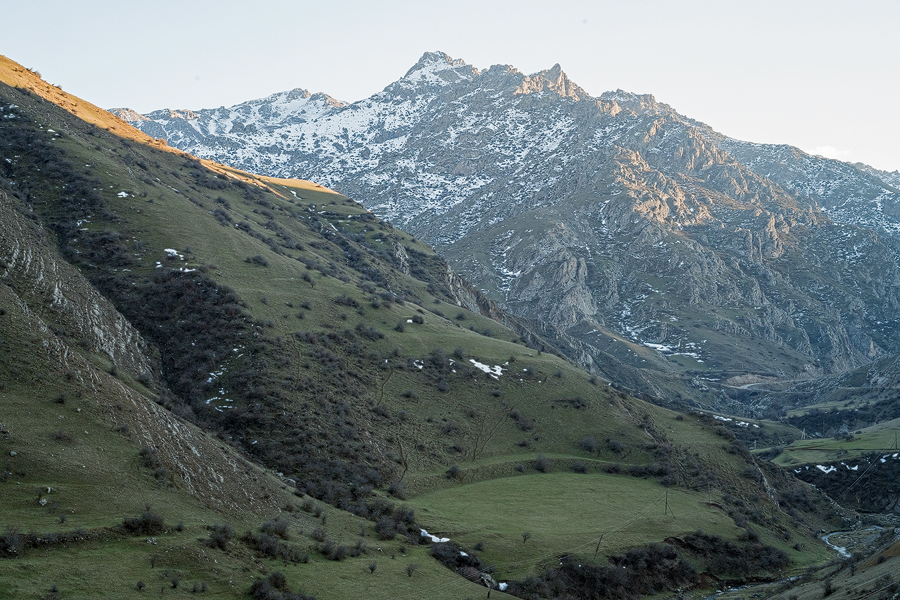
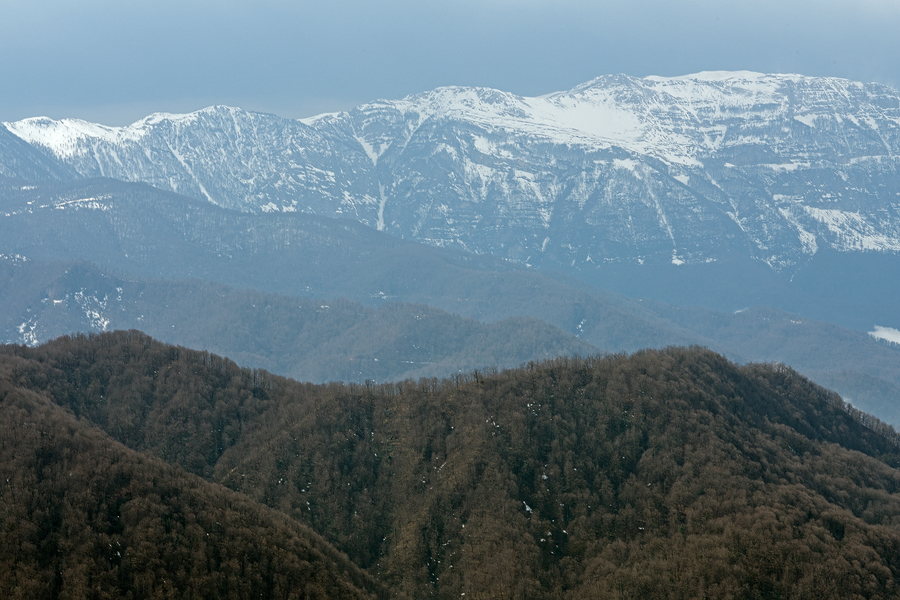
Galanthus transcaucasicus is the only snowdrop species that grows below sea level, occurring close to the coast of the Caspian (the surface of which is 28m below mean sea level) in Azerbaijan, near Lenkaran. It has also been recorded as high as 2200m in Golestan National Park and around 2000m near Khalkhal in the Iranian Talysh.
Given that the species occurs over such a wide geographical and elevational range, it is unsurprising that, much like G. reginae-olgae, different populations flower at very different times of year. It probably flowers as early as late November, near the south-east corner of the Caspian (though I failed to find it in flower on a trip there in November 2015). It certainly flowers at low elevations in both Iran and Azerbaijan from mid-December through late January. As reported below, I have now seen it in flower in mid February, between 500m and 1250m in the Talysh Mountains and my Iranian friend, ‘Ishmael’, reports it flowering as late as early April near Khalkhal. Bob Wallis reports it (in lit.) in flower in mid-April in the eastern Alborz. That’s five months from the first flower to the last. There can certainly be no gene exchange between plants in the extreme populations and it is quite plausible that they are drifting apart or responding to varying selection pressures and will (if you are prepared to wait a few hundred thousand years) eventually split into a number of different lineages or ‘species’.

A good road runs from Lenkaran, on the Caspian coast, to Lerik, high in the Talysh Mountains, at 1,150m. We found snowdrop populations at intervals along this road and also south of Lerik, towards the Iranian border. There appeared to be a simple relationship between elevation and flowering time. Those populations in the lowlands were already setting seed; those around 500m elevation had almost finished flowering, but not quite; those in and around Lerik were in full flower.
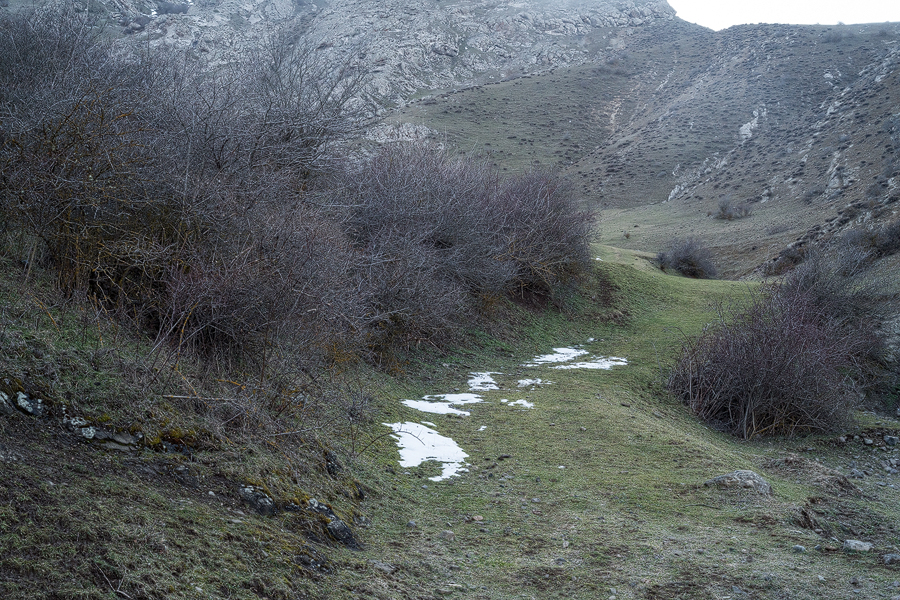
We were lucky with the weather on the two days we spent exploring around Lerik. The snowdrops were far from ubiquitous. Indeed, the populations we found were fairly small, occupying no more than a hectare, and typically less, and were widely spaced. The populations were all on steep slopes, rather shady and, at this elevation, the snowdrops grew exclusively in the shade of low Crataegus scrub. They did not venture even a metre out into the surrounding pasture.
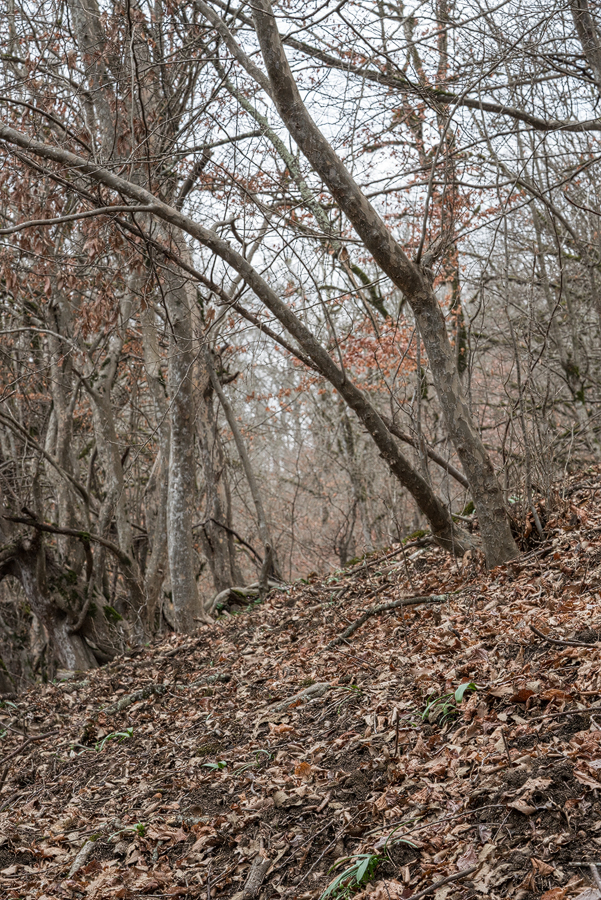
At lower elevations, snowdrops grew on slopes under a canopy of deciduous trees of a kaleidoscopic mix of species. I noted the following, but the list is far from complete: Parrotia persica, Fagus orientalis, Quercus castanaeifolia, Zelkova sp., Ulmus sp., Pterocarya sp., Alnus barbata, Acer velutinum.
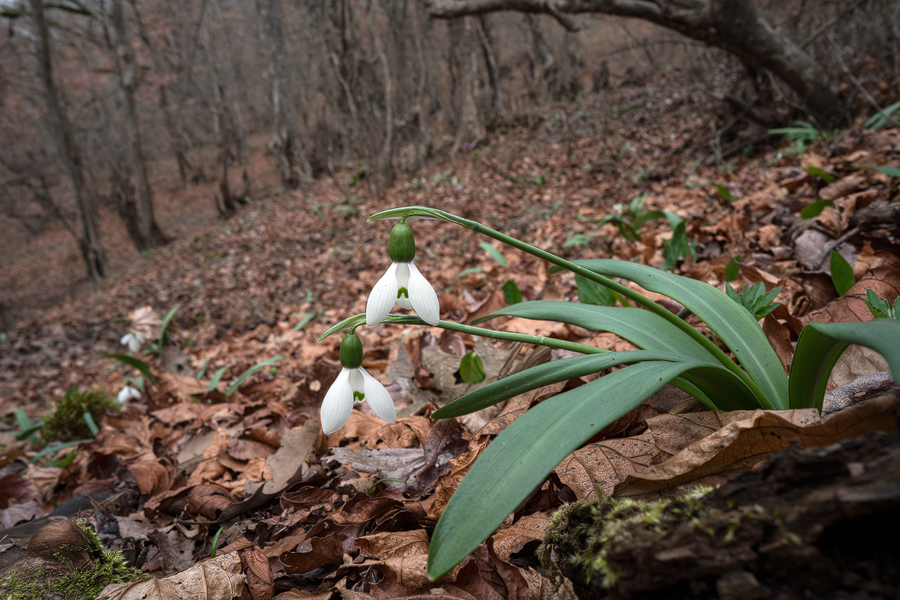
Galanthus transcaucasicus is not at all well known in cultivation, where it is represented by only a few introductions, which inevitably express only a small proportion of the variation that exists in the wild. Like all other snowdrop species that reproduce sexually (as opposed to clonally; G. alpinus var. bortkewitschianus is an example of the latter ), G. transcaucasicus is highly variable in all characters.
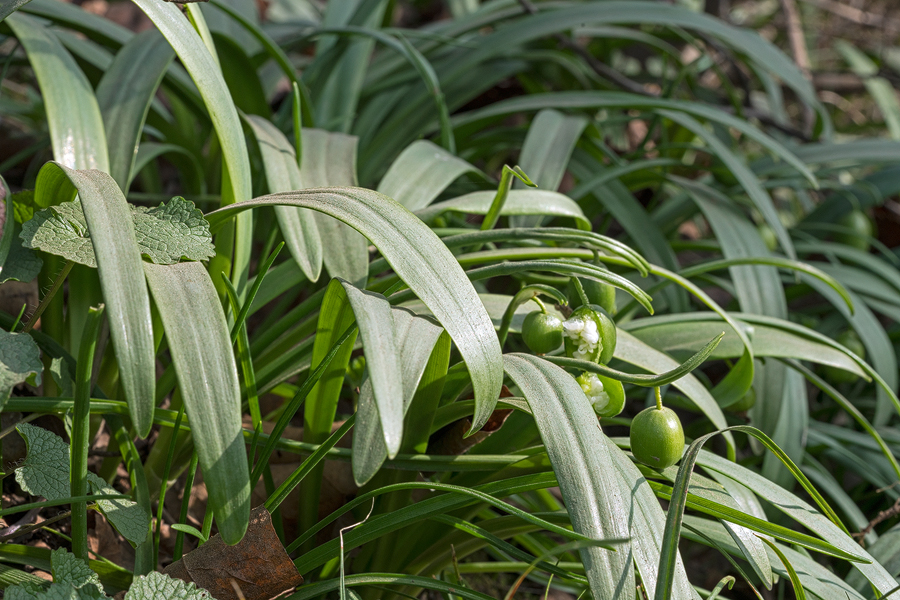
Let’s start with the leaves. They are a mid to olive-green colour, with a matt or slightly glossy surface. The adaxial (upper) surface often has a faint pale stripe running longitudinally down the middle. This is nowhere near as pronounced as the analogous stripe in G. reginae-olgae or G. peshmenii. The abaxial surface is smooth (sometimes with faint longitudinal grooves), with a prominent midrib.
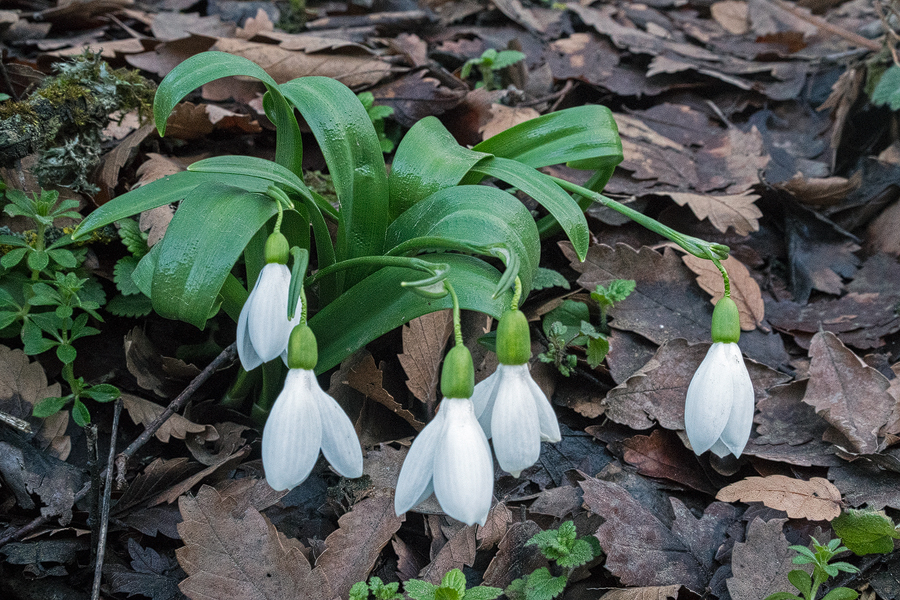
Leaf width varied considerably, from less than a centimetre at the widest point, to about 3.5cm in a few individuals. Anecdotally, I formed the impression that leaves got narrower, on average, from west to east but I did not have time to make detailed measurements and this observation needs to be verified.
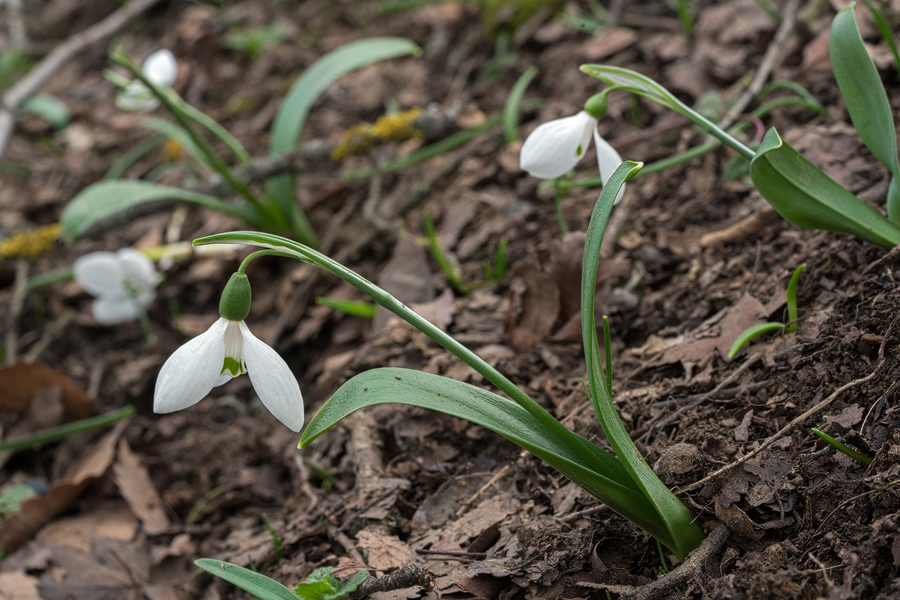
The vernation (as a reminder, this jargon term refers to the manner in which the two developing leaves produced by each bulb are held together in the bud) is supervolute. This means that, at its base, one of the leaves clasps the other, wrapping around it, so that the inner leaf appears to emerge from the outer one. I did not see any examples in which this vernation pattern was not obvious but it becomes less easy to discern as the plant grows and the leaves elongate.

Most plants occurred as single bulbs, or twos and threes, rather than as clonal clumps, but some had built up into small groups of half a dozen bulbs, or so.
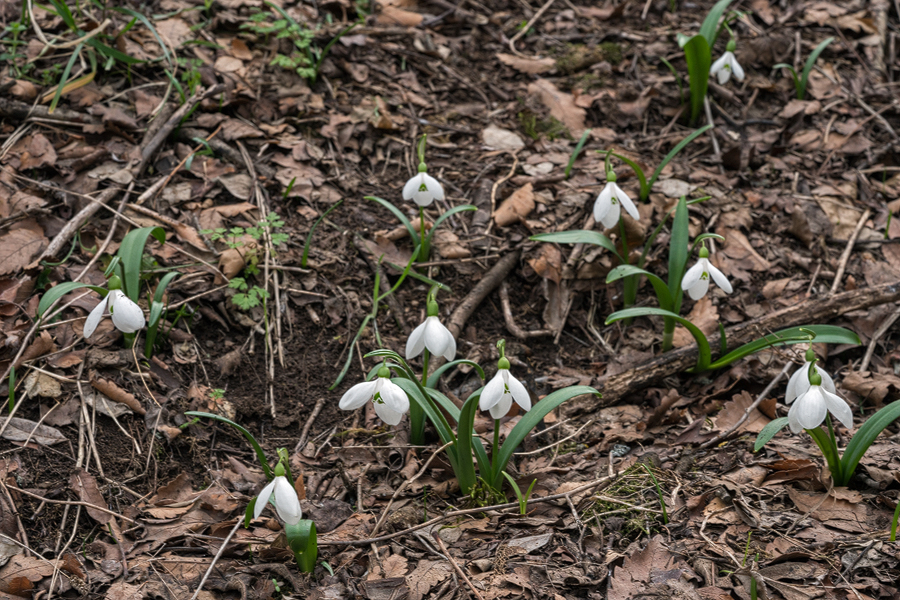
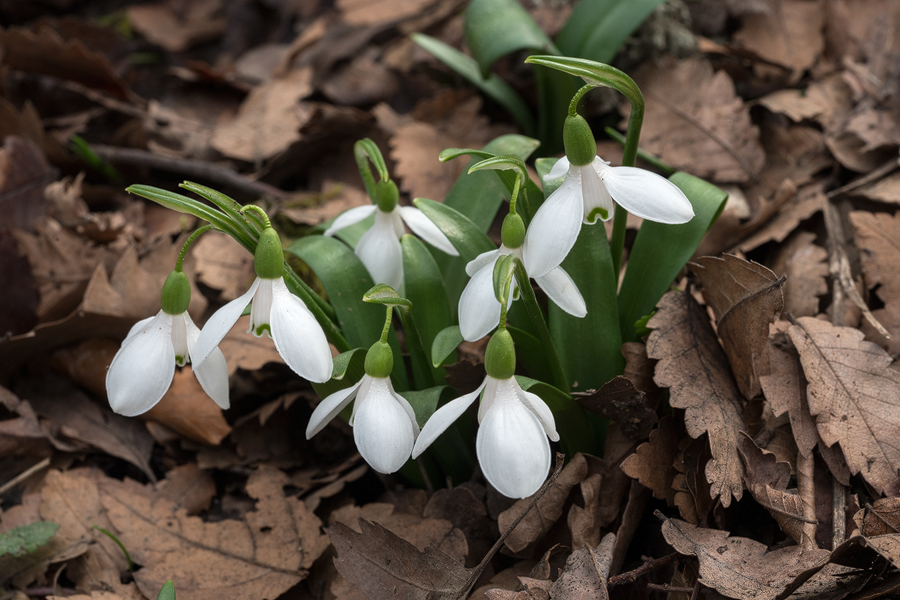
Snowdrop flowers vary enormously in shape, from narrowly elliptical to almost spherical. Some have necks as graceful as a ballet dancer’s, whereas others sport the bull-neck and shoulders of a night club bouncer. Some have the sexy, willowy, androgynous figure of K.D. Lang, while others might have served as models for Rubens, with hour-glass waists and vast, wobbling, white bottoms.

I’m a bum man, myself, and Galanthus transcaucasicus is therefore my kind of snowdrop. Most flowers that I saw had rather short claws (reminder: the roughly rectangular portion of the outer segments between the receptacle and the main, bowl-shaped part of the ‘petal’). From the end of the claw, the segments inflated rapidly into a deeply concave bowl, sometimes with slightly flared margins.
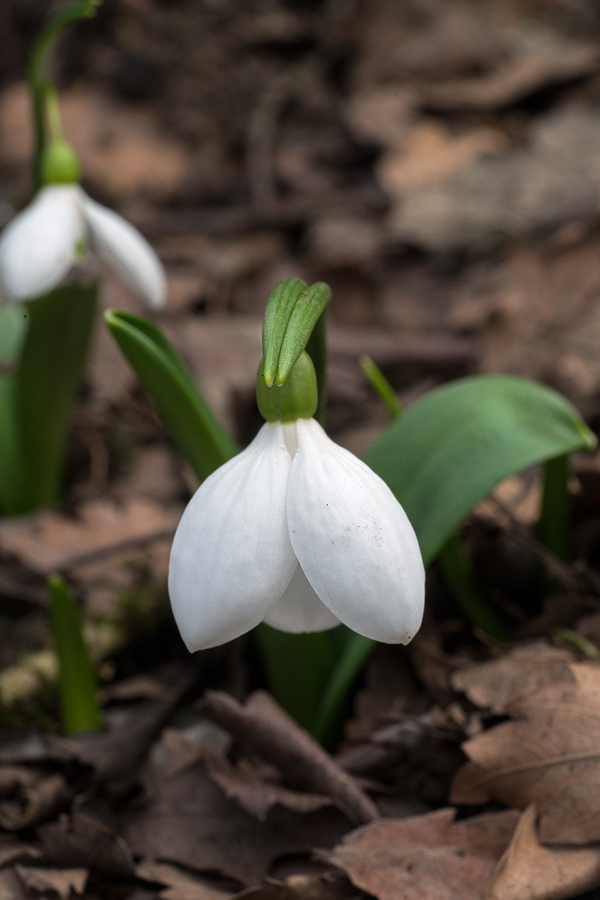
There were, of course, exceptions but the most attractive plants, to my eyes, had this combination of characters. Some were very Rubenseque indeed.
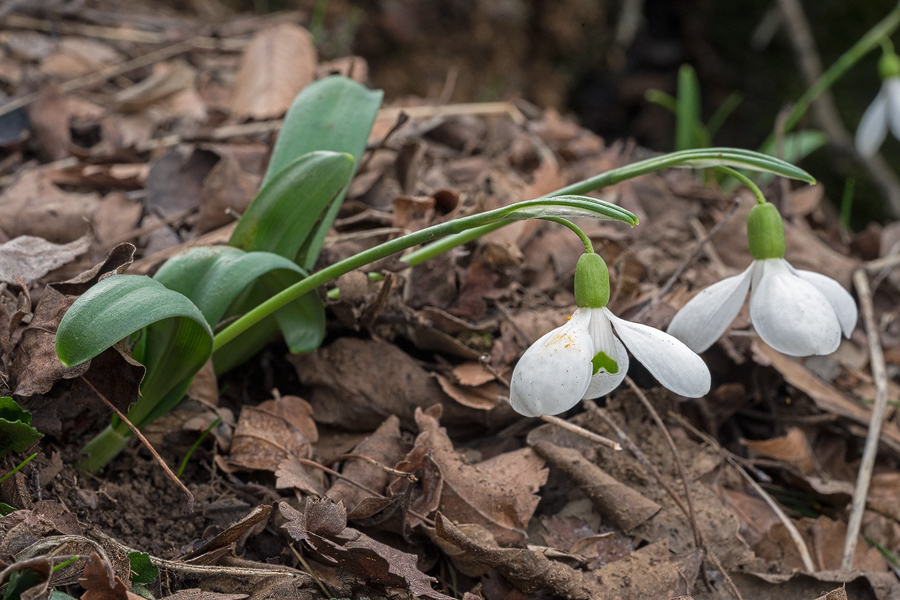
I was able to examine many thousands of flowering plants and only a tiny proportion – no more than half a dozen in total – had any green markings on the outer segments. This mutation is present in almost every snowdrop species I’ve seen, at varying frequencies. It seems to be rare in G. transcaucasicus.
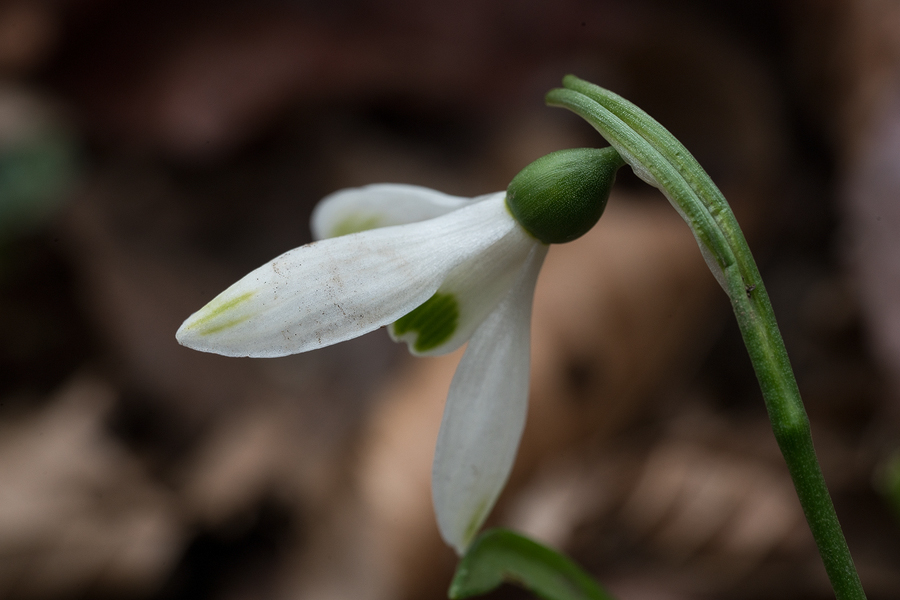
One population contained a handful of plants in which the outer segments appeared to be divided in two, with a thin green sliver running between the two halves. In this respect, they resembled the cultivar G. elwesii ‘Smaragdsplitter’.
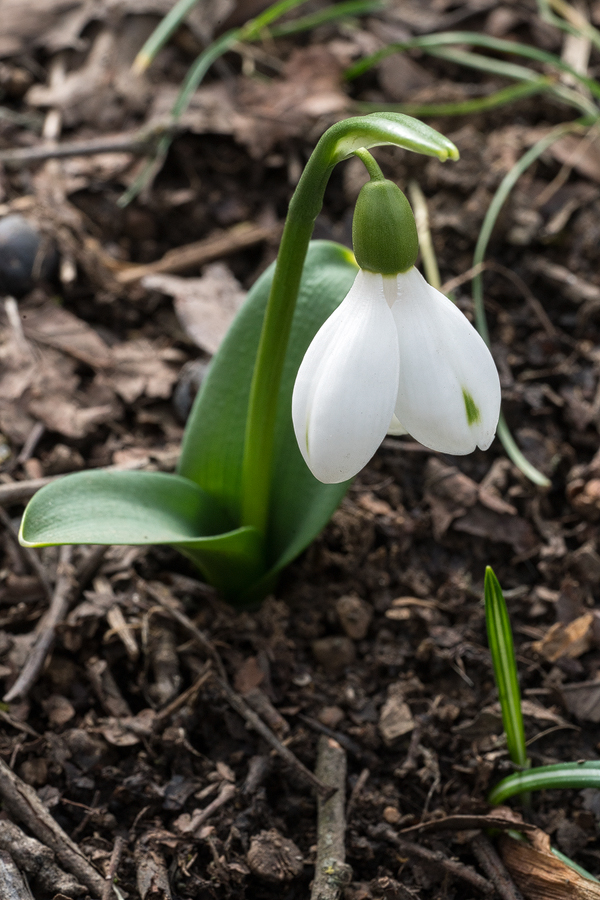
A very few plants had four outer and four inner segments.
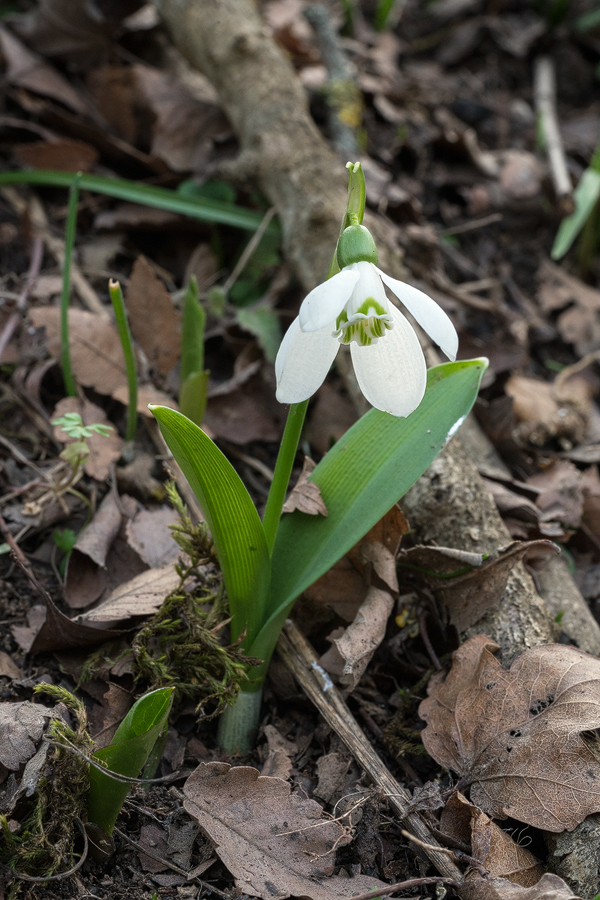
The inner segments, roughly triangular in shape, had a single green mark at the apex. This mark was a dark, bottle green in most cases and rather small, being confined to the apical fifth of the segment. It’s shape was generally an inverted-V, around the rather small sinus. Rarely, the mark was reduced to two dots either side of the sinus or covered up to a quarter of the segment. This feature of the flowers seemed to me to be less variable than in many other Galanthus species.
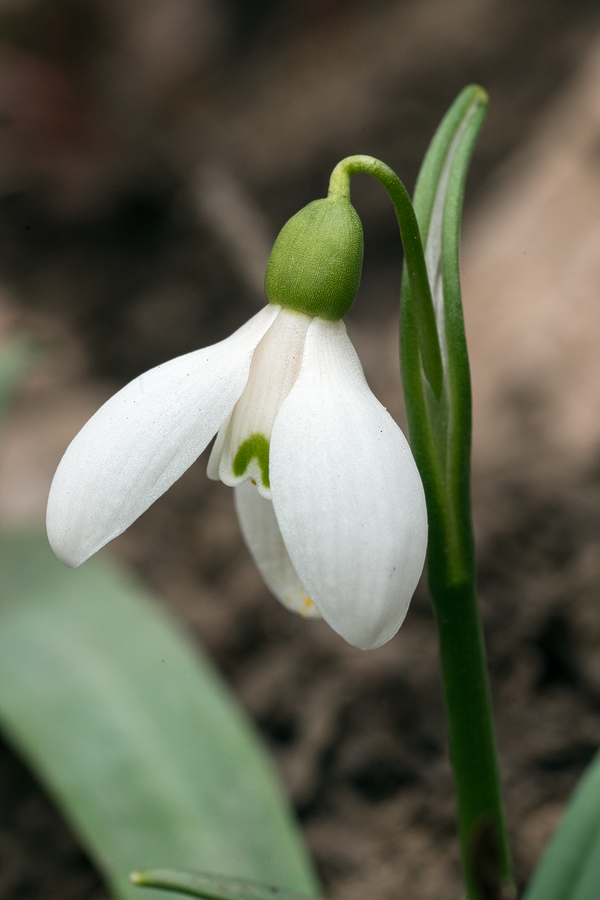
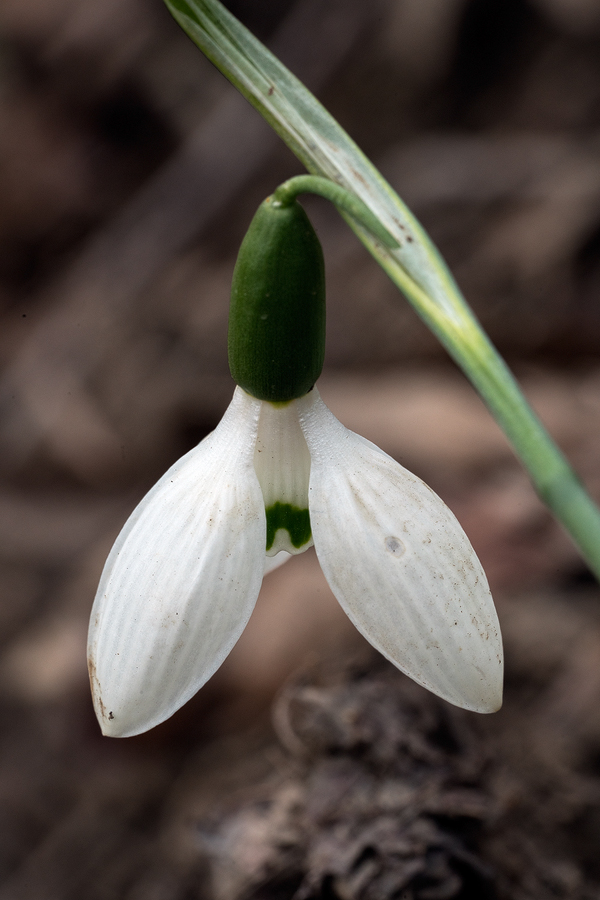
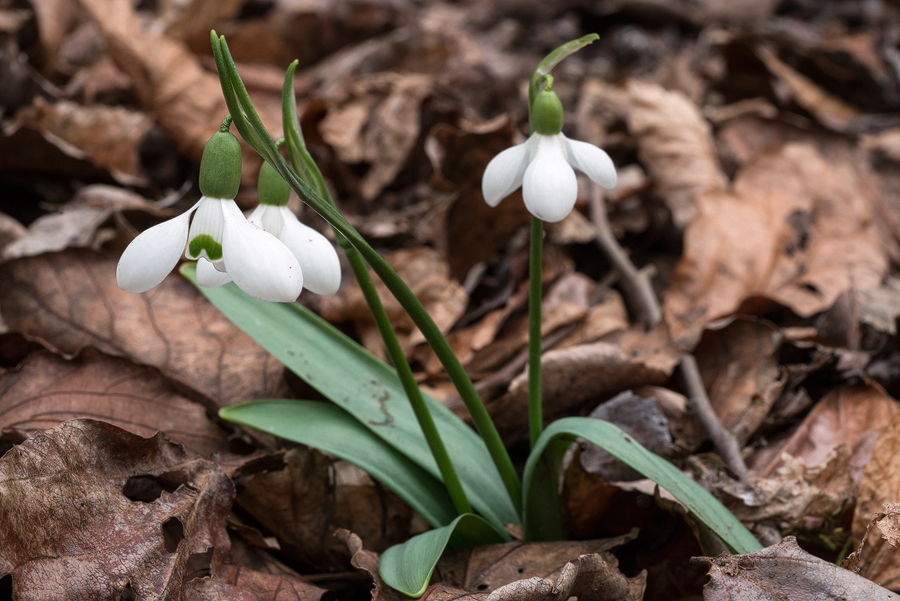
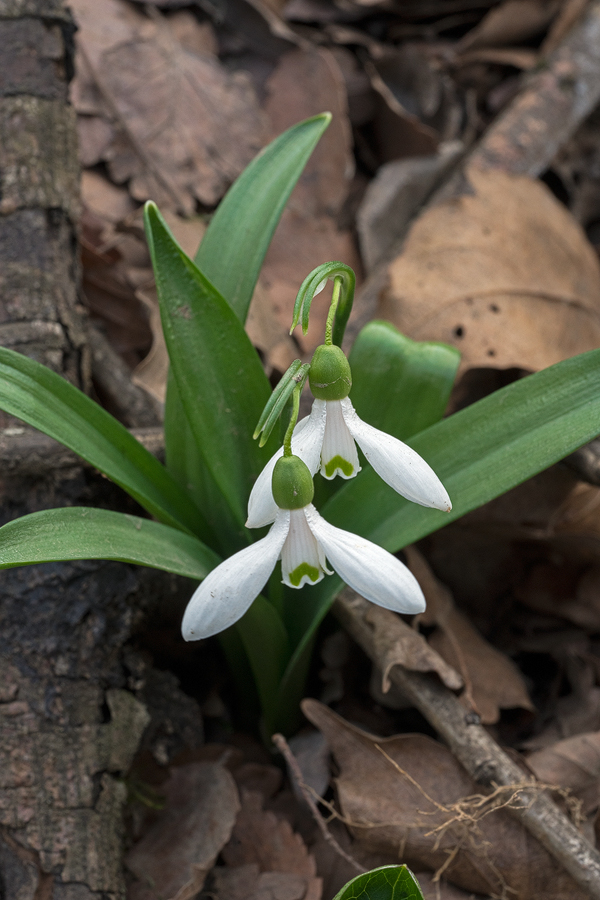
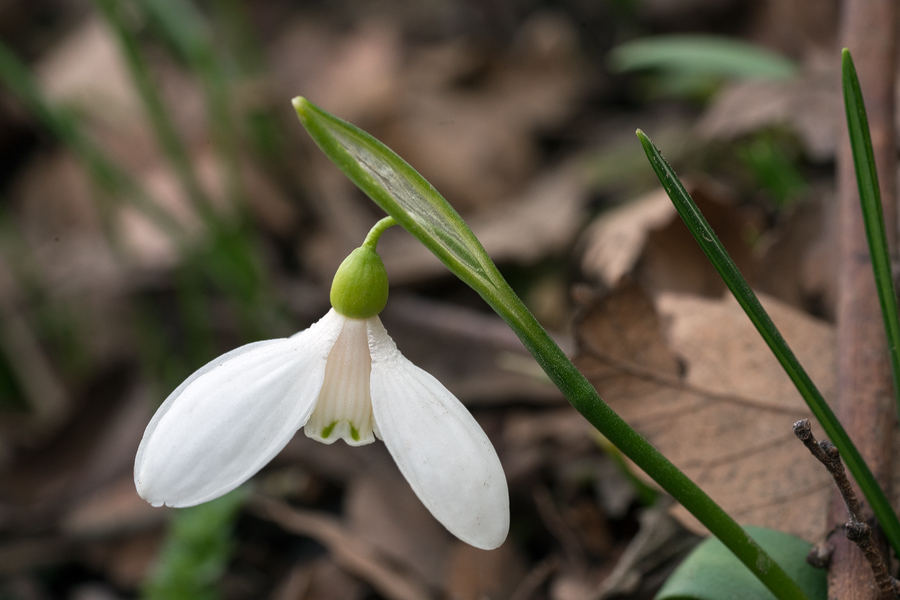
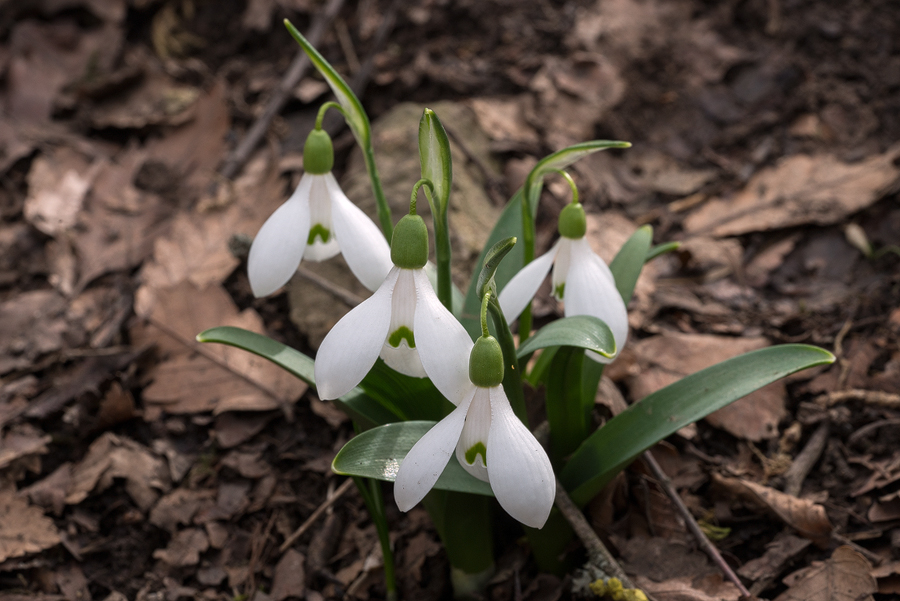

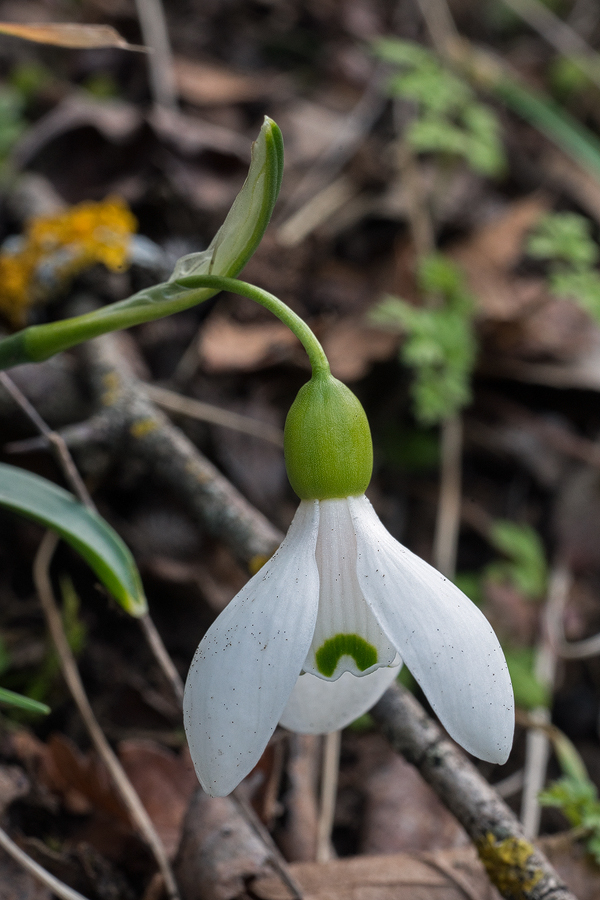
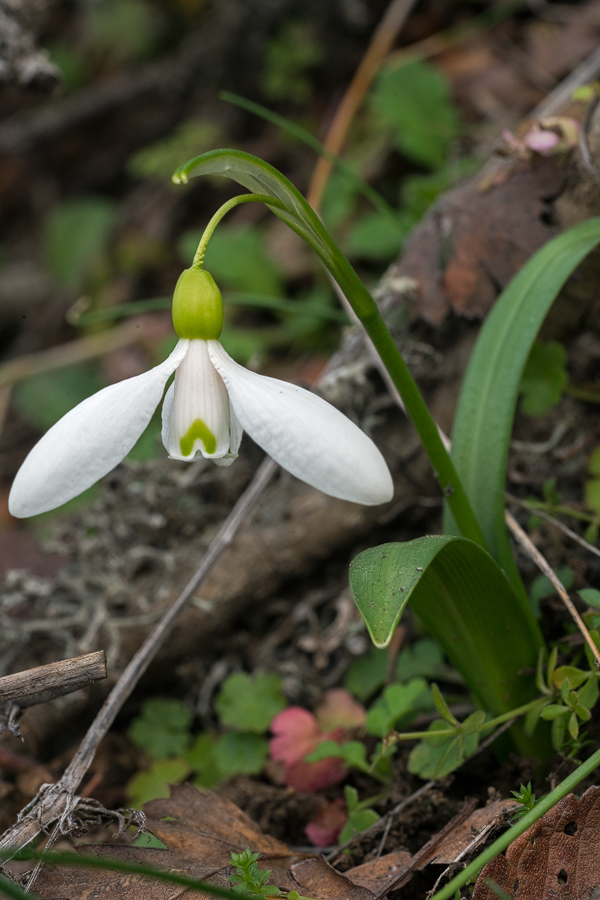
Populations that we saw at lower elevation already had well-developed fruits. Several of these populations were evidently regenerating healthily by seed, as evidenced by the thousands of seedlings germinating around the parent bulbs.
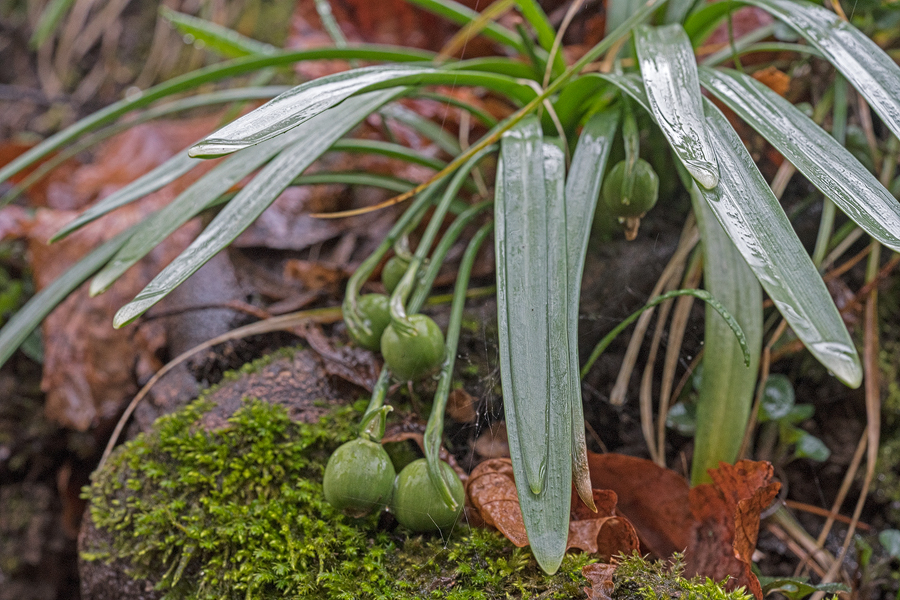
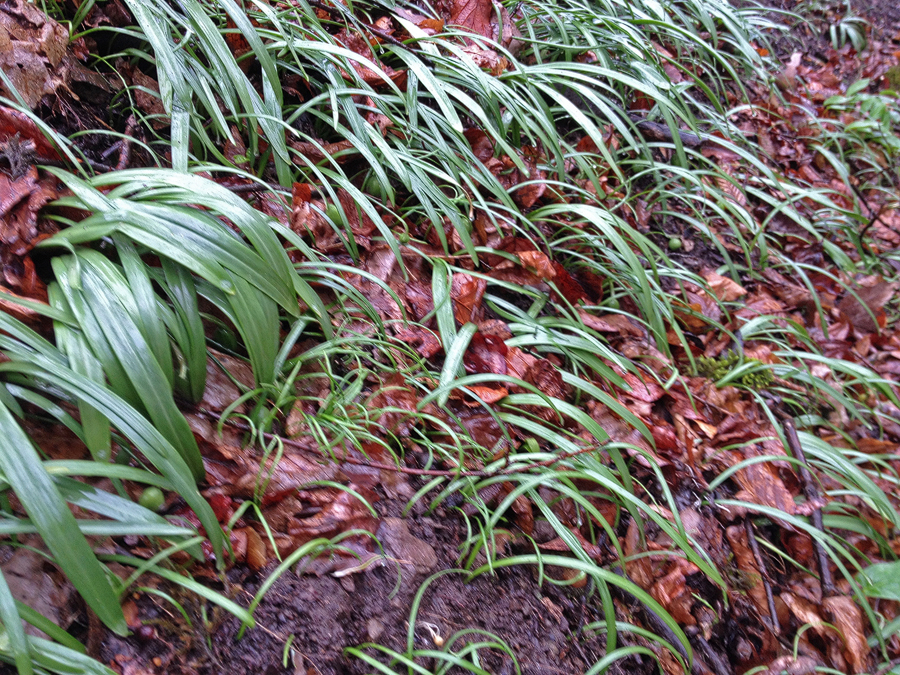
As noted above, it seemed, on the road from Lenkaran to Lerik, that there was a straightforward relationship between elevation and flowering time: the lower the population, the earlier it had flowered (as evidenced by the development of the fruits). But then we saw a population close to sea level that was still flowering and, in NW Iran, there was no obvious correlation between elevation and flowering time among the populations we saw below about 500m.
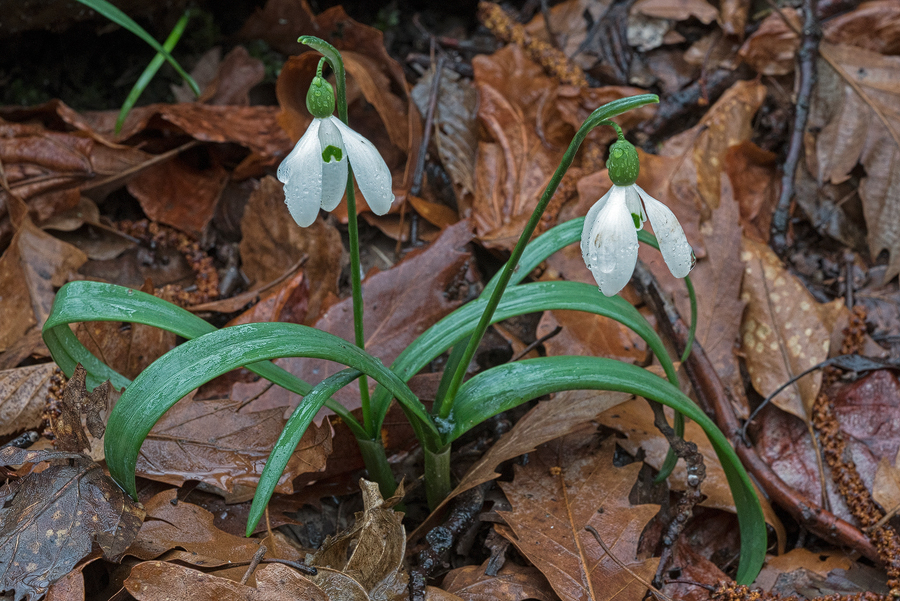
It would be interesting to see the results of a molecular phylogenetic study comparing plants from populations throughout the geographical and elevational range of this fascinating species.
